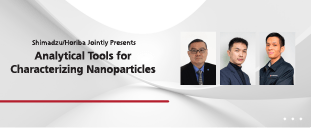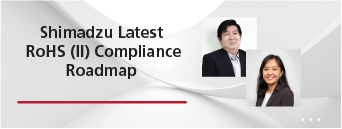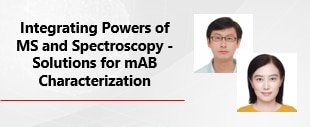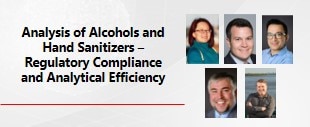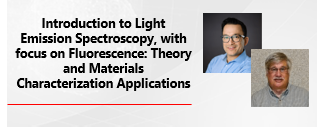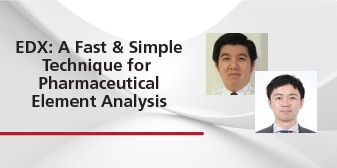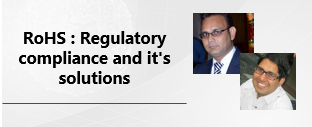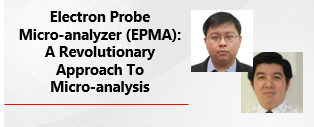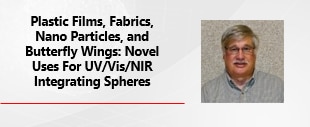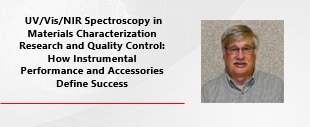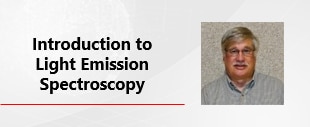How well do you know FTIR and ICP-MS? Join us for an engaging Digital Classrooms session, where our experts will provide practical insights and explore the real-world applications of these essential analytical techniques.
Spectroscopy
- Shimadzu Digital Classrooms
- Food, Agriculture, and Environment
- Pharmaceuticals and Biopharmaceuticals
- Chemical and New Energy
- Clinical and Forensics
- Chromatography
- Mass Spectrometry
- Spectroscopy
- Consumables
- Informatics
Explore the pivotal role of Spectroscopy in analytical technologies, where these advanced tools accelerate crucial insights into the structure and composition of materials. Serving as a cornerstone across a diversity of industries including pharma, biopharma, and chemical, molecular spectroscopy techniques like UV spectroscopy, Fourier Transform Infrared Spectroscopy (FTIR), energy-dispersive X-ray spectroscopy (EDX), and X-ray photoelectron spectroscopy (XPS) enable comprehensive analysis of material structure to uncover new insights. Join our Digital Classrooms to delve into these key applications and discover how mastering these spectroscopy tools can enhance your understanding of industry applications.
Spectroscopy
-
-
Join us for an informative session on Shimadzu’s Digital Classrooms to explore how XPS contributes to innovation solutions towards sustainability.
-
In this seminar, we will be focusing on 3 solutions: Spectroscopy, Particle Size Analysis, and Thermal Analysis. We are pleased to invite Mr. Lian Hock Chuan from Horiba as our guest speaker.
-
With the evolving landscape in the RoHS Directive, our expert team will provide rapid screening strategy to determine whether the sample has passed or failed the test.
-
In this seminar we would like to introduce analytical solutions developed at Shimadzu that can help in establishing workflow for mAb discovery, clinical evaluation, biosimilar characterization, process development and QA/QC for batch release testing.
-
During this webinar, several commonly used data tools and visualization programs will be discussed and demonstrated to help beginners to get an idea of where to start and select the right analysis tool for their needs in the demanding situation.
-
In this webinar presented by Shimadzu and the National Corn-to-Ethanol Research Center (NCERC) at Southern Illinois University in Edwardsville (SIUE), we will discuss the chemical analysis of ethanol, isopropanol, and hand sanitizers.
-
This webcast will consist of two parts. Part 1 will start off with a basic introduction to luminescence terminology and electronic theory. Part 2 will discuss several important materials characterization applications.
-
Simple good practices for quality data.
-
In this webinar, our panel of experts will discuss the market for alcohol-based hand sanitizers, the current regulatory environment, as well as analytical solutions including gas chromatography, Fourier-transform infrared spectroscopy, and UV-Vis spectroscopy to ensure the purity, potency, and safety of alcohols and hand sanitizers.
-
In this seminar, we would introduce Energy-Dispersive X-Ray Fluoroscopy (EDX) as an alternative technique to perform elemental analysis that requires little sample preparation, is easy to use and can provide results quickly; and how it could be used in various areas of the pharmaceutical industry.
-
Here in this webinar, our expert team will try to explain about the latest regulation, its implications, along with easy testing solutions to stay compliant to avoid any enforcement action.
-
We demonstrate the capabilities of the AXIS Supra+ and the technique of XPS in answering materials characterisation questions in application areas such as thin-films, biomaterials and Li-ion batteries.
-
Being the most effective non-destructive technique for qualitative and quantitative elemental analysis, Shimadzu would like to introduce the Electron Probe Micro-Analyzer (EPMA) as a precise & accurate technique for surface characterization.
-
This webcast will consist of two parts. Part 1 will start off with a basic introduction to UV/Vis/NIR integrating spheres. Part 2 will discuss two novel integrating sphere applications within the rapidly growing technology field of nanomaterials.
-
This presentation will address the function of integrating spheres and how they can be used to measure both diffuse reflection and transmission. Also discussed will be the difference between a relative and absolute reflection measurement.
-
This webcast will consist of two parts. Part 1 will start off with a basic introduction to luminescence terminology and electronic theory. Part 2 will discuss several important materials characterization applications.
Other Resources





